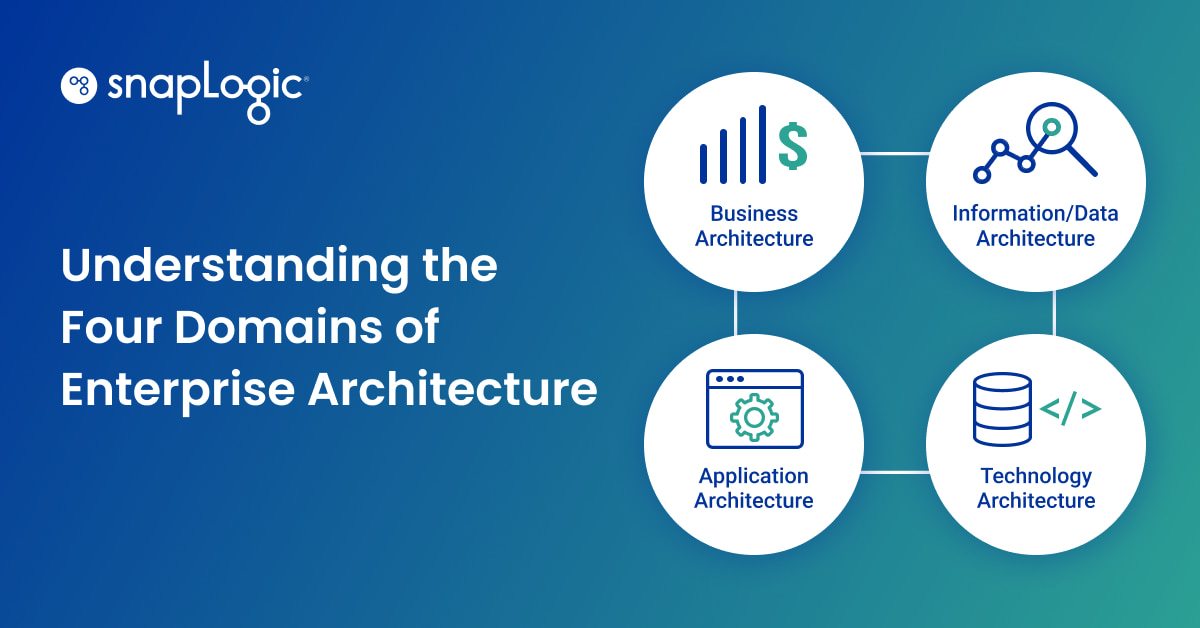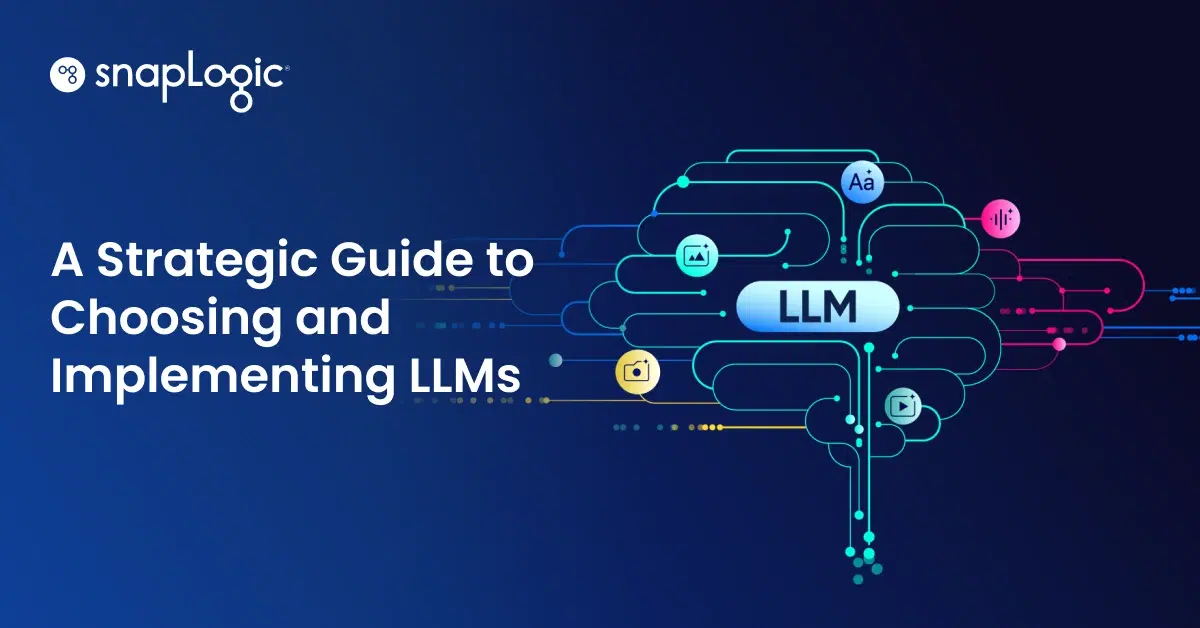Just as a building requires a good foundation to withstand external factors and preserve stability, so does an enterprise.
That foundation is enterprise architecture — a blueprint that defines, standardizes, plans, and documents the structure of an organization to determine which methods would help achieve business goals. It forms the basis of all processes, techniques, and strategies that ensure an enterprise can run smoothly.
Business leaders often consider enterprise architecture through four primary domains to reduce complexity. By breaking down these enterprise architecture domains, business leaders can see how the different areas of their organization align to meet critical objectives. This article will help you understand how the domains connect to attain business goals, often with the help of technology like iPaaS.
Business Architecture Domain
In this sector, enterprise architects build and oversee strategies and processes around how the organization operates and earns money.
Say an e-commerce company aims to increase its market share by 20% over the next two years. An enterprise architect at the company could work toward the goal by first analyzing the factors of the business that contribute to its current market share. From there, they could determine what needs to change to increase that share.
This analysis might lead the architect to conclude that the e-commerce company needs to offer site-wide free shipping.As a result the architect would map out a plan to help the organization cost-effectively offer free shipping over the next two years.
Other aspects of the enterprise that the business architecture domain might cover include:
- Output assessments – enterprise architects describe the current capabilities of the organization, i.e., how many products/services the company currently delivers and what those outputs may become in the future.
- The roles and functions within the enterprise – the enterprise architect helps establish the structure of the organization and the tasks within each department to support planned business objectives.
Information/Data Architecture Domain
Enterprise architects in this domain describe and document a company’s logical and physical data or information assets and the resources used to manage and govern them. They also explain how people use and transform the data to suit their needs.
Enterprises often have several types of data — metadata, transaction data, master data, reference data and so on. Enterprise architects help classify this information and decide which data is necessary for different business functions and departments.
Suppose an enterprise plans to expand to another country in a year but doesn’t have the data management capabilities for this growth stage. The architect then draws up a plan to resolve this problem so that everything is in order by the end of the year. Such plans may include complying with data regulations in the country and setting up new data processes in the country. Over this time frame, the enterprise architect in this domain updates current data management processes and policies and checks whether departments are complying with them.
How enterprises collect, store and use data influences business decisions, product decisions, customer experience and mergers and acquisitions (M&A). As a result, enterprise architects must partner with data analytics teams to ensure that data assets benefit the organization. They must ensure data is clearly defined, secure, available and accessible.

Application Architecture Domain
Modern enterprises use multiple applications across departments — from customer relationship management software to project management tools. Enterprise architects in this domain figure out how to deploy these applications, what business functions the applications serve, and how these tools should be connected.
Employees in an enterprise might want to include a new app in their toolkits. If their managers also find the app beneficial, enterprise architects can identify:
- What business operations this tool will help with
- Documentation on how to use the application
- How this application will integrate with the company’s other tools
Enterprise architects in this domain may also enforce policies around application usage. For instance, they may create a policy preventing app duplicates across the organization. This policy may require that departments and sub-organizations be allowed to deploy only enterprise-wide applications for use in their departments.
Technology Architecture Domain
The technology architecture domain encompasses all infrastructure and enterprise uses to support the goals and execution of the business, information and application processes. It covers all logical hardware and software apps, including front-end systems, back-end infrastructures, cloud and on-site platform technologies, IoT, networks and communications.
To demonstrate the difference between application and technology architectures, let’s consider an enterprise in the e-commerce industry. The e-commerce app falls under the technology architecture domain because it generates the data for the business — the number of visitors per day or sales per day. An analytics tool like Tableau, which helps translate the data generated into a comprehensible form and distributes it to where it’s needed, is under the application architecture domain.
An enterprise architect in this domain would define the requirements of the hardware and software infrastructure needed to power the resources in the application and data architectures that enable and optimize business processes. They would also build processes and structures around delivering these technologies or infrastructures.
Say an enterprise wants to diversify into another industry and needs infrastructure to power up the services it intends to offer. The technical architect designs the engine, describing its capabilities and what parts would be hardware or software. They also determine what programming languages and libraries are the most efficient to use based on their current technical expertise and resources.
Here, technical architects find it valuable to reduce technical diversity, i.e., minimizing the number of different infrastructure enterprises use. Doing this helps reduce the cost of expertise required to build and maintain such systems. It also helps ensure that your systems can connect with ease.
Use an iPaaS To Unify Processes Across Enterprise Architecture Domains
Enterprise architects often use established frameworks to define the different aspects of each domain. One of the more popular frameworks is The Open Group Architecture Framework (TOGAF), which describes the various models enterprise architects may use and the connection between the aspects under each enterprise architecture domain.
As businesses adopt digital technologies across all departments, enterprise architects are often responsible for connecting these tools to set up automations and share data. iPaaS solutions make this responsibility a breeze. They help enterprise architects centralize business efforts and improve the reliability of their processes.
SnapLogic is a great iPaaS solution that helps you streamline and automate your business, marketing, information and IT processes to achieve your business goals faster. You don’t have to take our word for it. Read about how one of our customers, Schneider Electric, integrated over 100 applications across the enterprise to automate its processes, improving the productivity of its employees. You can also request a demo at any time to explore our services.








